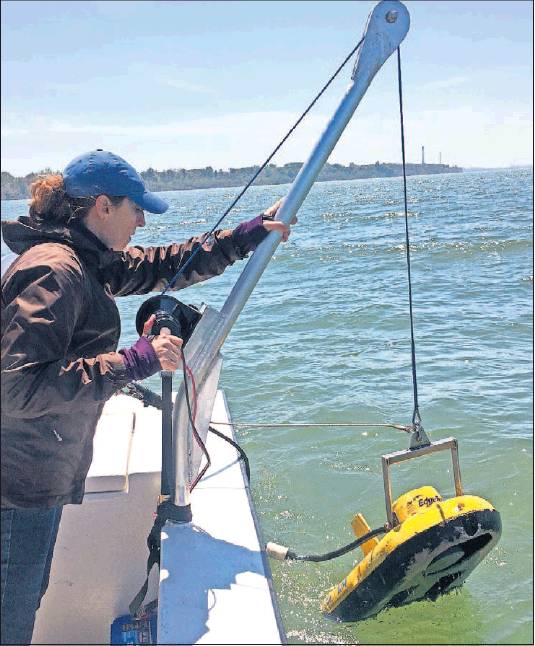ARCHAEOLOGY
New technology helps in search for Lake Erie’s shipwrecks
Bradley LepperUnderwater archaeologists are using the latest technology to search for shipwrecks and explore ancient landscapes in Lake Erie.
Using scientific instruments such as side-scan sonar, magnetometers and sub-bottom profilers, archaeologists are discovering shipwrecks as well as features of ancient landscapes that were inundated by rising lake levels.
In May 2018, Coastal Environments Inc. used this technology to investigate selected areas within a 30-square-mile section of the Lake Erie bottom off the coast of Ashtabula County. The Ohio State Historic Preservation Office funded this effort “to locate and identify potential submerged cultural resources.”
Those resources included historic shipwrecks, of course, but also relict stream channels where ancestors of American Indians lived between about 10,000 and 5,000 years ago, when Lake Erie was 40 to 60 feet shallower than today. The CEI team submitted its preliminary findings to the preservation office in July.
Sixty-three shipwrecks are reported to be on the bottom of Lake Erie in the vicinity of Ashtabula County. The CEI team decided to focus its search on those for which it already had good information about their location. In some cases, local divers already had discovered wrecks, but exact locations hadn’t been recorded.
The CEI team documented the remains of five shipwrecks:
• The James F. Joy, a three-masted schooner that sank in 1887 just east of Ashtabula Harbor.
• Wonder, a wood-hulled propeller tug that sank in the same area in 1908.
• The Dixie, a dredge that sank in 1964 about 5 miles northeast of Ashtabula Harbor.
• Possible “hull sections or other shipwreck components” near the reported location of the wreck of the Charles B. Hill, a wood-hulled passenger freighter that ran aground in 1906 near Madison-on-the-Lake.
• A large shipwreck, which the team thinks is likely the four-masted schooner Yukon, which sank about 3 miles off Ashtabula in 1905.
The CEI team also identified a relict stream channel where Wheeler Creek flows into the lake just west of Geneva-on-the-Lake and another to the west of Madison-on-the-Lake. These channels are likely places to look for ancient American Indian campsites that could provide insights on this formerly inaccessible chapter of Ohio’s past and may be the focus of future research.
Linda Pansing, a curator of archaeology with the Ohio History Connection who was a consultant on the project, said “the data provided by CEI will further our understanding of how Ohioans, from all time periods, utilized the lake environment.”
Reflecting on the results of the project, principal investigator Amanda Evans said she was surprised that the Ashtabula shipwrecks were so well-preserved: “In shallow water, where we expect shipwrecks to be chewed over by waves and storms, we found well-preserved, large pieces of ships.”
For Evans, the biggest takeaway from their work is that “Ohio has amazing shipwrecks; you just have to look for them.”
Brad Lepper is curator of archaeology at the Ohio History Connection. blepper@ohiohistory.org

